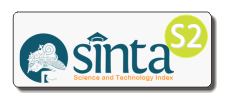Importance of development of STEM education for petrology and mineralogy
Yoshisuke Kumano, Shizuoka University, Japan
Abstract
Rocks and minerals are very important materials for studying Earth Sciences. They are used to investigate the planetary history and evolution and are utilized as resources to support our lives. At present, it is critical for all countries to secure a stable supply of mineral resources, and it is necessary to understand the deposits and the growing mechanisms of minerals. In Japan, elementary and junior high school students study igneous and sedimentary rocks and some other kinds of minerals. In this research, we conducted a questionnaire for 154 Japanese junior high school students to investigate their 1) knowledge of minerals, and 2) petrology and mineralogy with respect to usefulness of rocks and minerals to our living. First, about 95% of the students could answer the names of the stone, including those who mainly answered jewel names. However, ~56% students could not answer the benefits of minerals.In high school, 36% students learned Basic Earth Sciences and 1.2% learned Earth Sciences (MEXT 2017). There is concern that most of the Japanese people have few opportunities to learn Earth Sciences. As NGSS showed in 2013, Earth and Space Science are major fields of STEM learning. Conclusively, it is necessary to stop memorizing subjects and instead modify the Earth Sciences with respect to STEM education. In this paper, we discuss the student’s attitudes towards petrology and mineralogy so as to propose the Earth STEM education.
Keywords
Full Text:
FULLTEXT PDFReferences
Huston, D. L. (2000). Gold in volcanic-hosted massive sulfide deposits: Distribution, genesis, and exploration. In S. G. Hagemann & P. E. Brown (Eds.), Gold in 2000 (pp. 401–426). GeoScienceWorld. https://doi.org/http://doi.org/10.5382/Rev.13.12
International Mineralogical Association. (2017). The IMA list of minerals. Retrieved from http://www.ima-mineralogy.org/Minlist.htm
Kato, Y., Fujinaga, K., Nakamura, K., Takaya, Y., Kitamura, K., Ohta, J., … Iwamori, H. (2011). Deep-sea mud in the Pacific Ocean as a potential resource for rare-earth elements. Nature Geoscience, 4(8), 535–539. https://doi.org/10.1038/ngeo1185
Kumano, Y. (2016). The educational policy development of STEM education innovation in Minnesota and Iowa State and evaluations for the implementation at the Minnesota STEM education center and Iowa Governor’s STEM advisory council. JSSE Research Report, 31(8), 93–96. https://doi.org/10.14935/jsser.31.8_93
MEXT. (2017). On the results of the survey on the formation and implementation of curriculum at public high schools. Retrieved from www.mext.go.jp
Ministry of Education Culture Sports Science and Technology. (2017). The courses of study.
Saito, T., Okumura, J., & Kumano, Y. (2017). The theories and practices which appears in the summer camp as a models of STEM eduation in the informal settting. JSSE, 38, 287–290.
Simon, G., Kesler, S. E., & Chryssoulis, S. (1999). Geochemistry and textures of gold-bearing arsenian pyrite, Twin Creeks, Nevada; implications for deposition of gold in carlin-type deposits. Economic Geology, 94(3), 405–421. https://doi.org/10.2113/gsecongeo.94.3.405
Yakushi, D., & Enjoji, M. (2004). Chemical composition of Ores from the Takara volcanogenic massive sulfide deposit, Central Japan. Resource Geology, 54(4), 437–446. https://doi.org/10.1111/j.1751-3928.2004.tb00219.x
DOI: https://doi.org/10.21831/jipi.v4i1.18525
Refbacks
- There are currently no refbacks.
Copyright (c) 2018 Jurnal Inovasi Pendidikan IPA

This work is licensed under a Creative Commons Attribution-ShareAlike 4.0 International License.
Jurnal Inovasi Pendidikan IPA indexed by:

Jurnal Inovasi Pendidikan IPA by http://journal.uny.ac.id/index.php/jipi/index is licensed under a Creative Commons Attribution-ShareAlike 4.0 International License.
All rights reserved. p-ISSN: 2406-9205 | e-ISSN: 2477-4820
View My Stats














